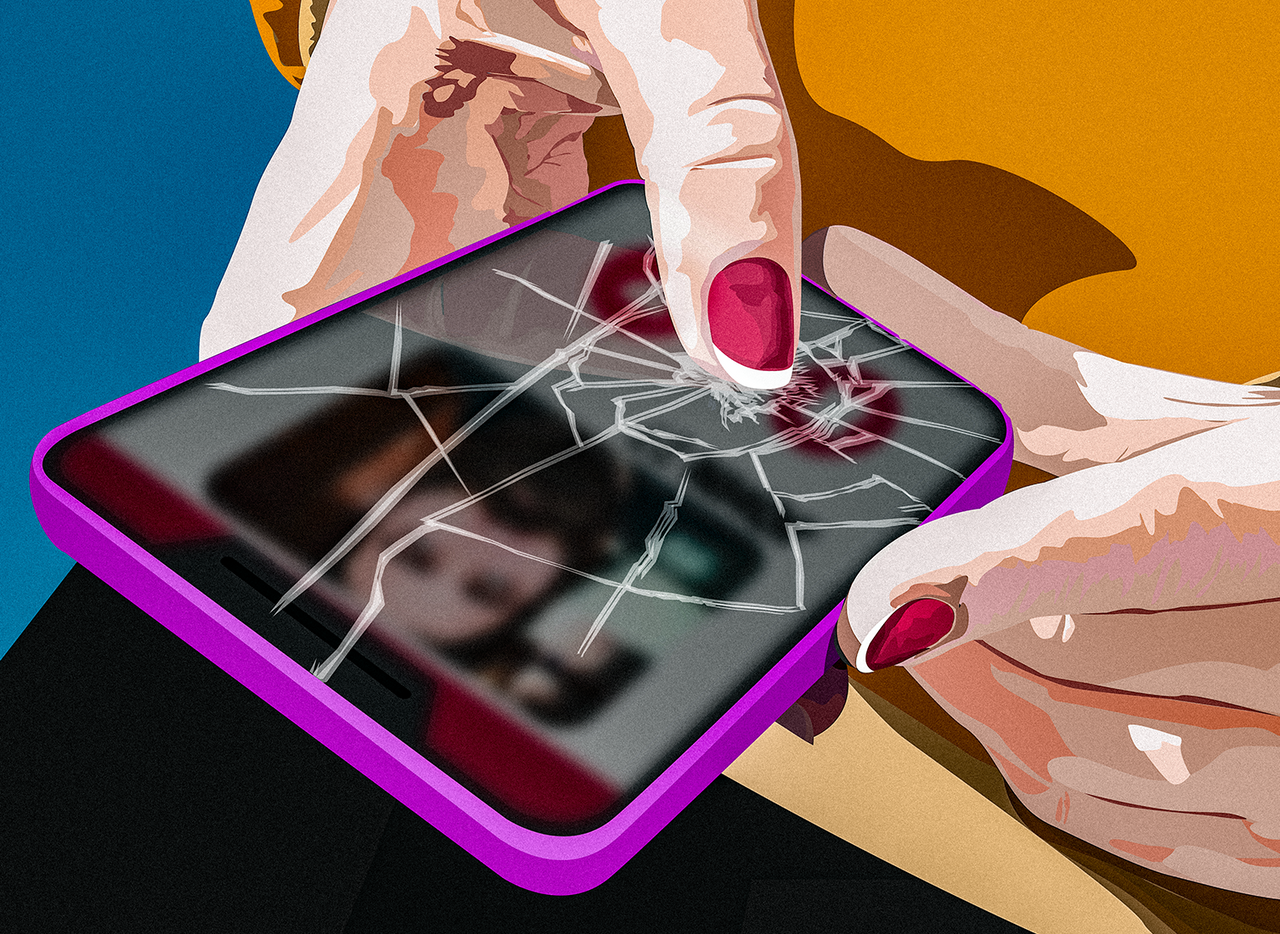Apple’s Next iPhone Is Coming Soon
Analysts say camera improvements are the biggest changes hitting Apple’s coming smartphones.
About to buy a new iPhone? Don’t. We expect Apple to announce new models at its Sept. 14 news event, which the company will once again stream virtually due to the coronavirus pandemic. And even if you aren’t interested in the latest and greatest, the company generally drops the price of some older models along with the new crop.
Apple is, of course, hush-hush on what’s to come. A company spokeswoman declined to comment on future products. But iPhone production tends to be a leaky business, and I asked analysts who monitor Apple’s sales and supply chain to weigh in on the next iPhone.
First, what will it be called? The iPhone 13? It’s a likely bet, since Apple skipped the iPhone 11S and went right to the 12.
Some have hypothesized Apple might steer clear of the number because of superstition, the way some skyscrapers skip a 13th floor. A survey of 3,000 Apple users by Sell Cell, a used-electronics vendor, found that 18% would be put off by an iPhone 13. But Apple hasn’t shied away from naming software iOS 13 or selling a 13-inch MacBook.
Whether it’s iPhone 13, iPhone 12S, iPhone 2021 or even iPhone (15th generation), there will be several new models this year. Here’s what you can expect from the coming device:
Modest Changes
“We’re in the 5G chapter of the iPhone, which is a multiyear chapter,” said Gene Munster, a managing partner and Apple analyst with venture-capital firm Loup Ventures. “It’s going to be pretty modest over years two and three.”
Last year was significant for the device. The iPhone 12 models—the first to support faster 5G cellular networks—got a redesign and gained two new sizes in the Mini and Pro Max. Apple typically follows a big update with a less noteworthy release. Mr. Munster said we’ll see incremental improvements: a faster processor, longer battery life and camera upgrades.
Brian White, an analyst with Monness Crespi Hardt, expects Apple to release four new models resembling the iPhone 12 designs, including an iPhone 13 Mini with a 5.4-inch display, an iPhone 13 with a 6.1-inch display, a similar-size iPhone 13 Pro and a larger iPhone 13 Pro Max with a 6.7-inch display. The phones will likely feature a new A15 Bionic chip, Mr. White said.
Camera Improvements
“There’s a pretty healthy set of rumours about the camera, which are true,” Mr. Munster said. “I believe that this will be Apple’s selling point this time around.”
Mr. Munster pointed to a Bloomberg story that reports the camera on the higher-end Pro and Pro Max models could support Portrait mode (where the background is artfully blurred) when shooting video, as well as a higher-quality video format. High-end Samsung Galaxy phones have been able to shoot portrait mode during video—called Video Live Focus—since 2019, with the Samsung Galaxy S10 5G.
One More Mini
Apple saw lackluster sales of the iPhone 12 Mini, which has a 5.4-inch screen. Counterpoint Intelligence Research Partners estimates that the Mini made up just 5% of total iPhone 12 sales in the quarter ending June 2021. Trendforce, a market research firm, reported that Apple halted iPhone 12 mini production.
However, Mr. Munster believes that we’ll see another Mini this year. “It’s a niche, but people in that niche tend to like them,” he said. This was welcome news to me. I happen to be in that niche—though I do think the small phone’s battery life could be much better.
Adam Wears, an analyst at Juniper Research, agrees. He expects Apple will phase out the Mini in subsequent years, focusing instead on its standard and premium-tier Pro and Pro Max models, while the iPhone SE, with a 4.7-inch screen, becomes the lower-priced model.
Wider 5G Availability
Mr. Wears also anticipates the next iPhone will expand the use of high-frequency millimetre-wave technology in handsets in more countries across Asia and Europe.
The iPhone 12 globally supports the more conventional sub-6-gigahertz band, but the faster millimetre-wave antenna, which can’t travel long distances and is more susceptible to obstacles such as trees, is only available in iPhone models in the U.S.
Mr. White agrees that the next iPhones will likely “further tap into this nascent global 5G ramp.”
Shipping Delays
Apple said it is affected by the disruption to the global supply of microprocessors. “We’re going to take it sort of one quarter at a time and, as you would guess, we’ll do everything we can to mitigate whatever set of circumstances we’re dealt,” Chief Executive Tim Cook told analysts during a public conference call in July.
Mr. Munster said that while he expects the company to announce the phone in September with availability in October, he thinks most customers won’t receive devices until December.
No Foldable—Yet
“The chapter after 5G is foldable phones,” said Mr. Munster, who expects Apple to release that device in 2023. The competition in the space is heating up: Samsung recently announced two foldable devices, the Galaxy Z Fold3 and Galaxy Z Flip3. The former opens like a book and the latter works like an old-school flip phone, like the old Motorola Razr. The prediction that iPhones will eventually flip is reinforced by the fact that Samsung is one of Apple’s top display manufacturers.
My colleague Joanna Stern found a pattern in Samsung and Apple releases. The iPhone maker typically incorporates features two to three years after Samsung. And if that timeline is any indication, the iPhone is soon due for an in-screen fingerprint reader and a screen with a faster 120-hertz refresh rate for smoother animations.
Joanna reported that Apple has been working on in-screen fingerprint technology and has considered including Touch ID and Face ID on the same device, according to two former Apple employees. It probably won’t appear this year, however.
What About Other Phones?
If you’re in the market for an upgrade, there are, of course, other options to consider.
Google already announced that its next Pixel 6 will run its own proprietary Google-designed chip and feature a new camera system. We’ll hear more details sometime this fall. Meanwhile, Samsung lowered the price of its recent foldables. And while the Galaxy S21 is still probably the best overall Android purchase, Samsung will likely launch its next non-folding flagship Galaxy phones in early 2022.
Reprinted by permission of The Wall Street Journal, Copyright 2021 Dow Jones & Company. Inc. All Rights Reserved Worldwide. Original date of publication: September 10
 Copyright 2020, Dow Jones & Company, Inc. All Rights Reserved Worldwide. LEARN MORE
Copyright 2020, Dow Jones & Company, Inc. All Rights Reserved Worldwide. LEARN MORE
This stylish family home combines a classic palette and finishes with a flexible floorplan
Just 55 minutes from Sydney, make this your creative getaway located in the majestic Hawkesbury region.
As Paris makes its final preparations for the Olympic games, its residents are busy with their own—packing their suitcases, confirming their reservations, and getting out of town.
Worried about the hordes of crowds and overall chaos the Olympics could bring, Parisians are fleeing the city in droves and inundating resort cities around the country. Hotels and holiday rentals in some of France’s most popular vacation destinations—from the French Riviera in the south to the beaches of Normandy in the north—say they are expecting massive crowds this year in advance of the Olympics. The games will run from July 26-Aug. 1.
“It’s already a major holiday season for us, and beyond that, we have the Olympics,” says Stéphane Personeni, general manager of the Lily of the Valley hotel in Saint Tropez. “People began booking early this year.”
Personeni’s hotel typically has no issues filling its rooms each summer—by May of each year, the luxury hotel typically finds itself completely booked out for the months of July and August. But this year, the 53-room hotel began filling up for summer reservations in February.
“We told our regular guests that everything—hotels, apartments, villas—are going to be hard to find this summer,” Personeni says. His neighbours around Saint Tropez say they’re similarly booked up.
As of March, the online marketplace Gens de Confiance (“Trusted People”), saw a 50% increase in reservations from Parisians seeking vacation rentals outside the capital during the Olympics.
Already, August is a popular vacation time for the French. With a minimum of five weeks of vacation mandated by law, many decide to take the entire month off, renting out villas in beachside destinations for longer periods.
But beyond the typical August travel, the Olympics are having a real impact, says Bertille Marchal, a spokesperson for Gens de Confiance.
“We’ve seen nearly three times more reservations for the dates of the Olympics than the following two weeks,” Marchal says. “The increase is definitely linked to the Olympic Games.”

Getty Images
According to the site, the most sought-out vacation destinations are Morbihan and Loire-Atlantique, a seaside region in the northwest; le Var, a coastal area within the southeast of France along the Côte d’Azur; and the island of Corsica in the Mediterranean.
Meanwhile, the Olympics haven’t necessarily been a boon to foreign tourism in the country. Many tourists who might have otherwise come to France are avoiding it this year in favour of other European capitals. In Paris, demand for stays at high-end hotels has collapsed, with bookings down 50% in July compared to last year, according to UMIH Prestige, which represents hotels charging at least €800 ($865) a night for rooms.
Earlier this year, high-end restaurants and concierges said the Olympics might even be an opportunity to score a hard-get-seat at the city’s fine dining.
In the Occitanie region in southwest France, the overall number of reservations this summer hasn’t changed much from last year, says Vincent Gare, president of the regional tourism committee there.
“But looking further at the numbers, we do see an increase in the clientele coming from the Paris region,” Gare told Le Figaro, noting that the increase in reservations has fallen directly on the dates of the Olympic games.
Michel Barré, a retiree living in Paris’s Le Marais neighbourhood, is one of those opting for the beach rather than the opening ceremony. In January, he booked a stay in Normandy for two weeks.
“Even though it’s a major European capital, Paris is still a small city—it’s a massive effort to host all of these events,” Barré says. “The Olympics are going to be a mess.”
More than anything, he just wants some calm after an event-filled summer in Paris, which just before the Olympics experienced the drama of a snap election called by Macron.
“It’s been a hectic summer here,” he says.

AFP via Getty Images
Parisians—Barré included—feel that the city, by over-catering to its tourists, is driving out many residents.
Parts of the Seine—usually one of the most popular summertime hangout spots —have been closed off for weeks as the city installs bleachers and Olympics signage. In certain neighbourhoods, residents will need to scan a QR code with police to access their own apartments. And from the Olympics to Sept. 8, Paris is nearly doubling the price of transit tickets from €2.15 to €4 per ride.
The city’s clear willingness to capitalise on its tourists has motivated some residents to do the same. In March, the number of active Airbnb listings in Paris reached an all-time high as hosts rushed to list their apartments. Listings grew 40% from the same time last year, according to the company.
With their regular clients taking off, Parisian restaurants and merchants are complaining that business is down.
“Are there any Parisians left in Paris?” Alaine Fontaine, president of the restaurant industry association, told the radio station Franceinfo on Sunday. “For the last three weeks, there haven’t been any here.”
Still, for all the talk of those leaving, there are plenty who have decided to stick around.
Jay Swanson, an American expat and YouTuber, can’t imagine leaving during the Olympics—he secured his tickets to see ping pong and volleyball last year. He’s also less concerned about the crowds and road closures than others, having just put together a series of videos explaining how to navigate Paris during the games.
“It’s been 100 years since the Games came to Paris; when else will we get a chance to host the world like this?” Swanson says. “So many Parisians are leaving and tourism is down, so not only will it be quiet but the only people left will be here for a party.”
This stylish family home combines a classic palette and finishes with a flexible floorplan
Just 55 minutes from Sydney, make this your creative getaway located in the majestic Hawkesbury region.






















